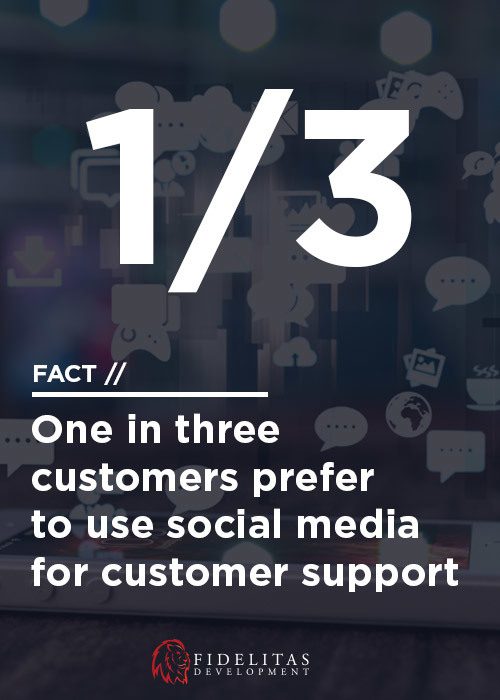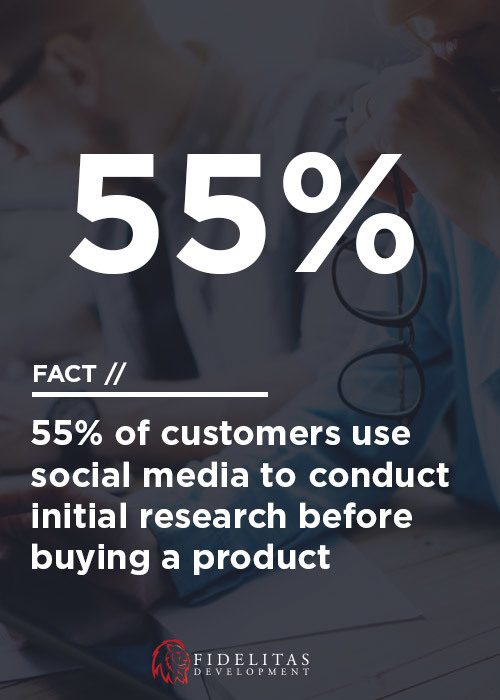
How Retailers Can Leverage Social Media to Survive the Retail Apocalypse
The retail industry took a huge hit last year. Retail giants – including Sports Authority, Aeropostale, and PacSun – filed for Chapter 11 bankruptcy, while the retail behemoth, Wal-Mart, announced its own plans to close 269 stores.
So far, 2017 looks to be no different. Within the first quarter, American Apparel, Wet Seal, and The Limited began closing off their remaining stores, while Macy’s, J.C. Penney, and Sears Holdings announced plans to roll out major closures this year.
Yet, despite rising casualties on the battlefield, the retail industry is far from dead.
Major brick-and-mortar retailers – including Ross Stores, TJ Maxx, and L Brands (think: Victoria’s Secret) – continue to dominate the industry, while the e-commerce giant everyone is chasing, Amazon, witnessed soaring profits for its seventh consecutive quarter.
Overall, national retail sales grew by 2.7 percent in 2016 and – with disposable income up by more than 3 percent – the retail industry is on track to see another great year.
So, how can retailers – with unprecedented competition and rapidly changing buyer behavior – not only survive the new era, but also thrive?
Our answer? Easy – A killer, data-driven social media strategy.
 Social Media: The New Frontier
Social Media: The New Frontier
With fierce competition hitting retailers from every angle, it’s time for retail marketers to get serious about executing a well-developed social media strategy.
Why?
- First, traffic: Remember the old adage, Location, Location, Location? Well, in today’s retail environment, Attention, Attention, Attention is the new name of the game.While shopping malls – once America’s premiere gathering centers – continue to shut doors across the nation, Facebook’s 1.65 billion active users alone spend an average of 50 minutes per day on the social platform. Apart from watching movies and TV, that’s more than any other leisure activity!As the attention economy evolves into the new marketplace, retailers will need to meet their customers where they’re at in order to get found and bring new traffic to their business.
- Another reason – data: Any marketer worth their salt knows data is the lifeblood of a successful marketing campaign. With ample data, marketers can craft a retail strategy that’s relevant and personalized to fit the needs of their customers.As social media analytics tools – including Facebook Audience Insights, Twitter Analytics, and LinkedIn Analytics – become more sophisticated, retail marketers can mine comprehensive social data to create an innovative campaign that sticks.
- Next – brand recognition: In a digital world full of noise, consumers are looking for brands they know and can trust. By consistently posting valuable, shareable content on social media, retailers can build a reputation as a trusted source of information and allow customers to form a deep relationship with their brand.
- And, finally – customer service: Customer service is vital to a retailer’s success – satisfied customers become loyal customers and are more likely to generate positive word of mouth about your business.As social media evolves into the official channel for customer service – one in three customers prefer to use social media for customer support – retailers can use quick response times and honest, personal empathy to build an impeccable user experience.
Are you ready to use social media to take your retail business to the next level? Here are five steps for building a solid social media strategy:
1. Know Your Customers
The first step to building a marketing campaign that sticks is to know your customers. With advanced social analytics tools, retailers can use data on current and potential customers to build buyer personas.
By learning customer goals, values and pain points, you can use buyer personas as a northern light to guide each decision as you develop a social media strategy and plan. To get started, log onto each of your social media analytics dashboards and start analyzing the data.
 Ask yourself:
Ask yourself:
- What values does my customer hold near and dear to her heart?
- What books and magazines does he read?
- What is her income level, highest education level, favorite grocery store?
- What’s stopping him from achieving his goals?
As you continue to ask more questions, you will have enough data to create multiple buyer personas that accurately represent your audience. Polls are also a great tool to mine data from your audience.
Don’t be afraid to name your buyer personas and bring them to life! Remember, your customers are not just data points, they are real people that want to form a relationship with you. Act accordingly.
[NOTE: If you don’t have enough user data to generate accurate buyer personas, feel free to make initial assumptions or use competitor data. As you continue to publish content, track audience engagement to fine-tune your buyer personas.]
2. Know Your Competitors
Remember: a marketing strategy is not a to-do list; it’s a plan of action in response to a competitor. In order to stand out with an innovative marketing campaign, you’ll need to know your competitors like the back of your hand.
To get started, follow your competitors’ social media accounts. If your competitors are large enough, you may be able to use social analytics tools to learn more about their audience. Continue to study your competitors closely and take advantage of their weaknesses to stand out in the marketplace.

3. Produce Valuable Content
As customers grow less responsive to some forms of traditional advertising and old-school sales tactics, it is extremely important for retailers to publish free, valuable content in order to persuade customers to pay attention.
Work with your content marketing team to plan a consistent calendar full of eye-catching, shareable content. Don’t be afraid to spend money to promote your message – in a crowded social marketplace, organic content is becoming almost invisible.
If you have the budget, leverage the influence of niche celebrities – like Sammi Maria instead of Selena Gomez – to amplify your brand.
4. Create an Impeccable Customer Journey
To survive the retail apocalypse, it isn’t enough to know your customers and competitors while producing valuable content. To meet your bottom line, you’ll need to lead customers back to your storefront – whether online or offline – and maintain the customer relationship long after the initial purchase is made.
This is where the customer journey comes in.
A customer journey is a visual representation of every touch point a customer has with your business. With 55 percent of buyers using social media to conduct initial research and 33 percent of buyers preferring to use social media for customer support – social media should encompass a large portion of your overall customer roadmap.
Be sure to work with each of your marketing departments to ensure social media has seamless integration throughout the entire customer journey. For more information on how to construct an overall customer journey, read Digital Marketer’s comprehensive guide here.
5. Use Retargeting to Maintain the Customer Relationship
When a customer completes a purchase or takes an action on your website, the relationship is far from over. Savvy retail marketers will maintain the relationship in order to upsell additional products, or – if the customer has yet to make a purchase – finally pull the trigger.
With list-based retargeting, you can capture customer behavior and leverage social media to re-engage customers or convert leads into sales. Without retargeting, retailers are essentially leaving money on the table when it comes maximizing their bottom line.
For a complete guide on how to get started, check out Hubspot’s Beginner’s Guide on Retargeting Ads.
In today’s fiercely competitive retail environment, the days of doing just enough to get by are long gone. To survive, retailers will need to leverage the power of social media analytics to get personal and stand out from the competition.



